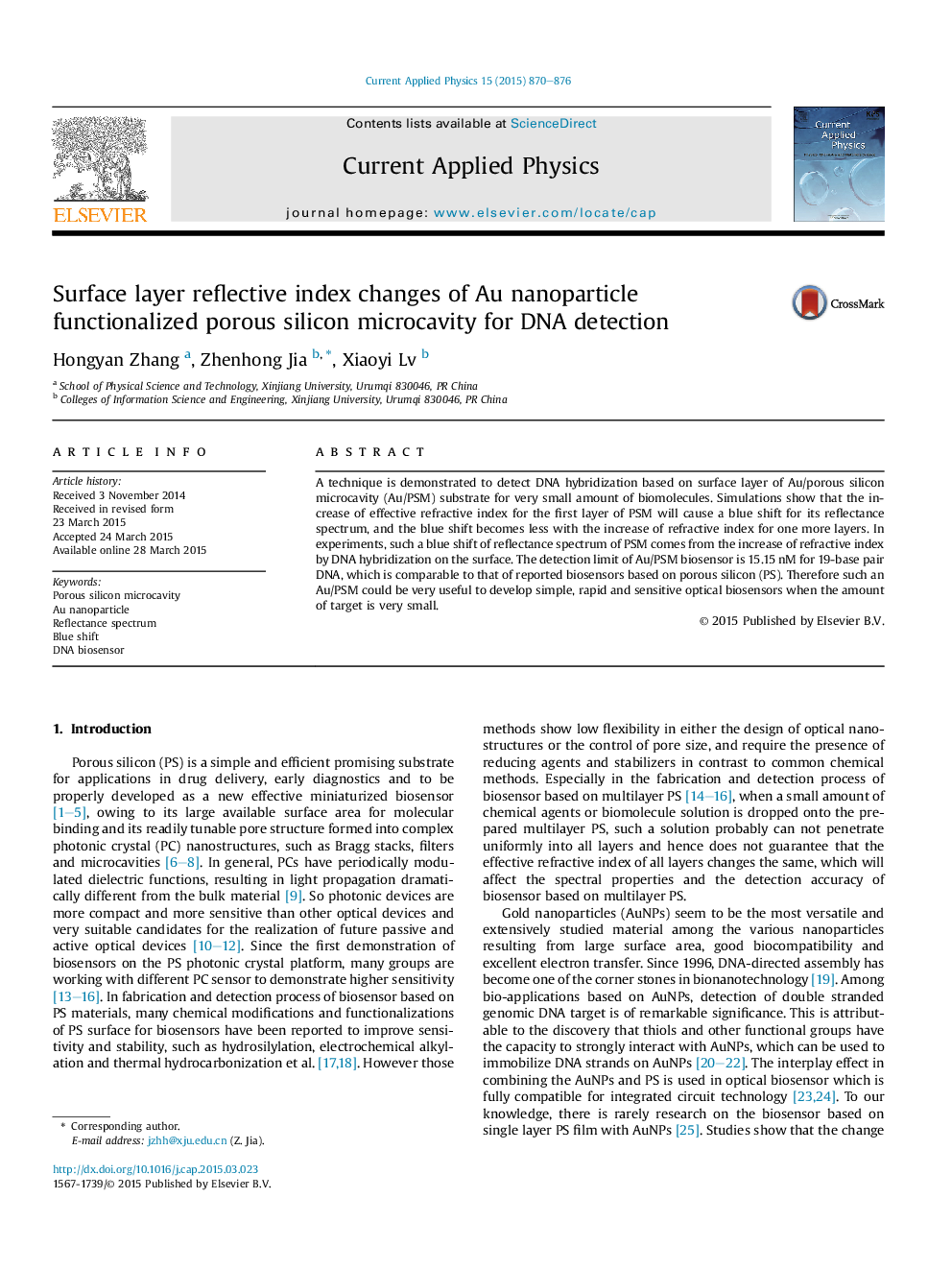| Article ID | Journal | Published Year | Pages | File Type |
|---|---|---|---|---|
| 1785599 | Current Applied Physics | 2015 | 7 Pages |
Abstract
A technique is demonstrated to detect DNA hybridization based on surface layer of Au/porous silicon microcavity (Au/PSM) substrate for very small amount of biomolecules. Simulations show that the increase of effective refractive index for the first layer of PSM will cause a blue shift for its reflectance spectrum, and the blue shift becomes less with the increase of refractive index for one more layers. In experiments, such a blue shift of reflectance spectrum of PSM comes from the increase of refractive index by DNA hybridization on the surface. The detection limit of Au/PSM biosensor is 15.15Â nM for 19-base pair DNA, which is comparable to that of reported biosensors based on porous silicon (PS). Therefore such an Au/PSM could be very useful to develop simple, rapid and sensitive optical biosensors when the amount of target is very small.
Related Topics
Physical Sciences and Engineering
Physics and Astronomy
Condensed Matter Physics
Authors
Hongyan Zhang, Zhenhong Jia, Xiaoyi Lv,
